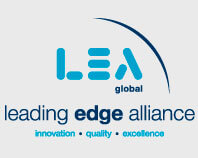As described in previous publications, M&A transactions are traditionally structured on a cash-free and debt-free basis. In the traditional sense, debt includes amounts owed to banks or other third-party lenders and is repaid over a set period of time at an interest rate dictated in the debt agreements. However, in the context of a deal, the definition of debt can mean so much more. Audited financial statements generally include both short-term and long-term debts owed with specific terms and future payment schedules summarized within the notes to the financials. At face value, this level of information may appear to suffice for inclusion in purchase documents as amounts to be settled by the seller; however, a deeper dive is generally needed to ensure both a seller or buyer are aware of other items that can be considered debt-like in nature. While the concept of debt-like items can be subjective, a holistic view of a company’s debt inclusive of such items must be navigated to successfully close a transaction and safeguard both parties from unwanted surprises post-closing. This article will cover the basics of net debt, provide insight on certain items that are traditionally negotiated as debt-like in a deal process and provide suggestions on how to best address these items in the context of a transaction.
Defining Net Debt
The term “net debt” is used to specify a company’s cumulative traditional debt balance including bank debt, third party debt, amounts drawn on existing lines of credit and any accrued interest, less cash and cash equivalents on hand at a point in time. Net debt generally represents a dollar-for-dollar reduction against the purchase price, so understanding what is included in the definition of debt within the purchase documents is imperative as it has a direct impact on the proceeds that transfer at the time of close. Cash and cash equivalents are normally included as a reduction against the total debt balance because the seller traditionally has rights to these assets and the expectation is that this cash will be used to pay down outstanding debts at time of sale. As part of the due diligence process, transaction accountants will gain an understanding of the daily needs of a business and analyze many aspects of a company’s balance sheet, including the underlying transaction level details of significant general ledger accounts to uncover additional items that should be considered for inclusion with net debt.
To read the full article, please click here.
Learn More
If you are embarking on a transaction opportunity, please contact Vijay Vaswani by calling 770.396.2200.




